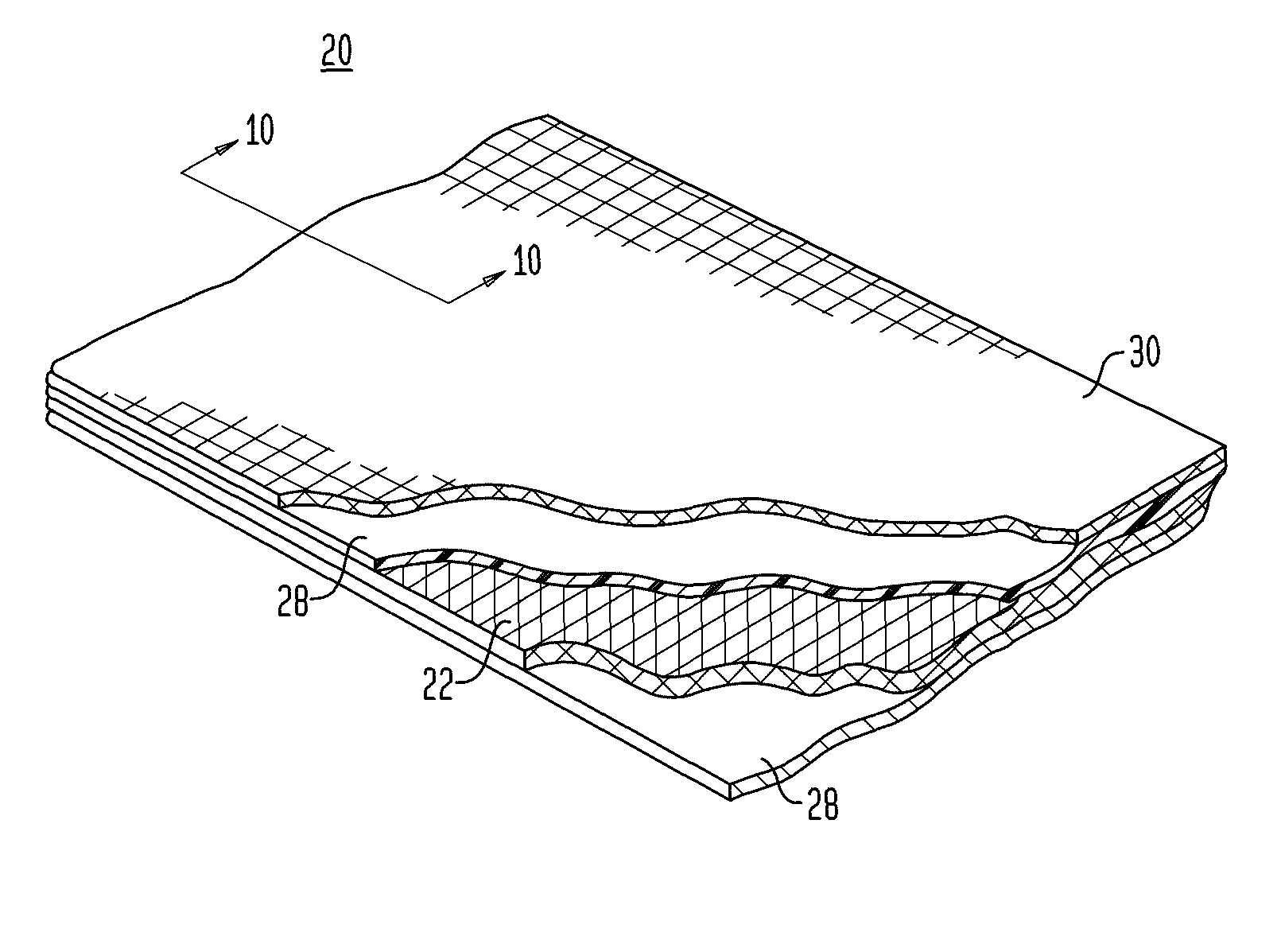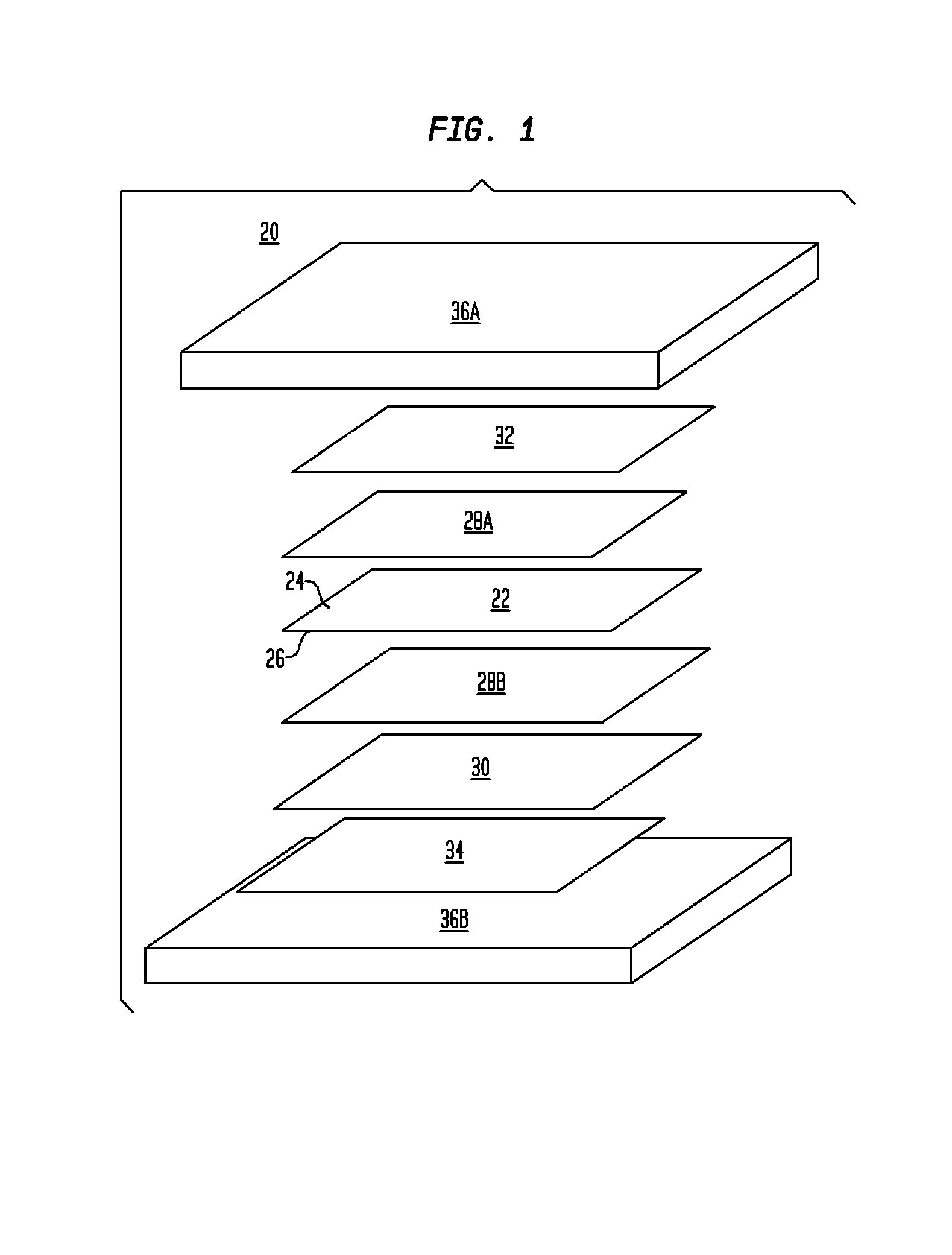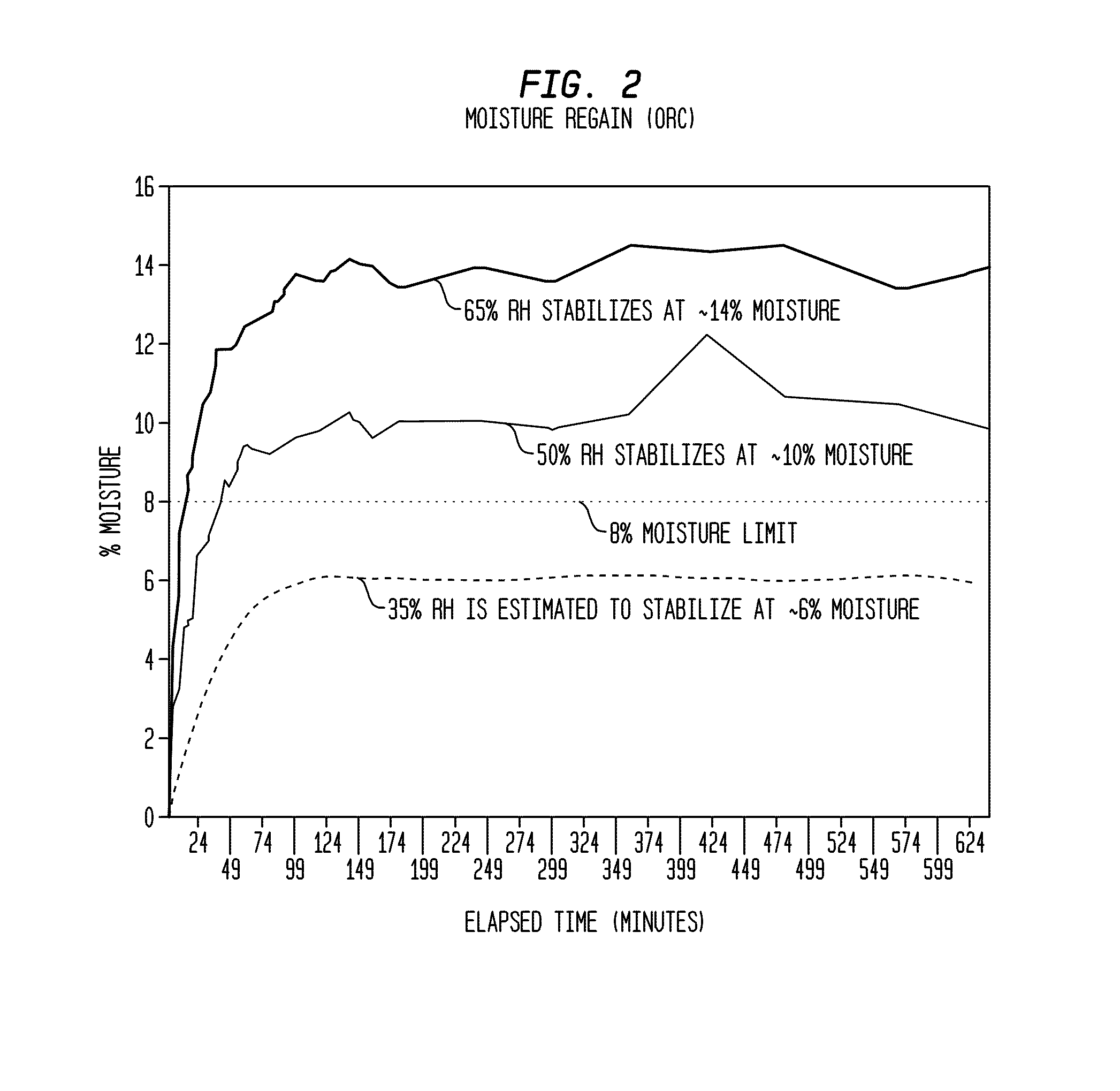Methods of making composite prosthetic devices having improved bond strength
a composite prosthetic and bonding technology, applied in the field of composite prosthetic devices, can solve the problems of weak bonding of layers, high cost, and high cost, and achieve the effect of minimizing the likelihood of layers pulling apart during use and improving strength
- Summary
- Abstract
- Description
- Claims
- Application Information
AI Technical Summary
Benefits of technology
Problems solved by technology
Method used
Image
Examples
Embodiment Construction
[0042]The headings used herein are for organizational purposes only and are not meant to limit the scope of the description or the claims. As used throughout this application, the word “may” is used in a permissive sense (i.e., meaning having the potential to), rather than the mandatory sense (i.e., meaning must). Similarly, the words “include”, “including”, and “includes” mean including but not limited to. To facilitate understanding, like reference numerals have been used, where possible, to designate like elements common to the figures.
[0043]Referring to FIG. 1, in one embodiment of the present invention, a composite prosthetic device 20 includes a support layer 22 having a first major surface 24 and a second major surface 26. The support layer 22 is preferably adapted to permit the anchoring of the composite prosthetic device to body parts such as the peritoneum or an abdominal wall. In one embodiment, after the composite prosthetic device is positioned over a body part, the sup...
PUM
| Property | Measurement | Unit |
|---|---|---|
| size | aaaaa | aaaaa |
| thickness | aaaaa | aaaaa |
| thickness | aaaaa | aaaaa |
Abstract
Description
Claims
Application Information
 Login to View More
Login to View More - R&D
- Intellectual Property
- Life Sciences
- Materials
- Tech Scout
- Unparalleled Data Quality
- Higher Quality Content
- 60% Fewer Hallucinations
Browse by: Latest US Patents, China's latest patents, Technical Efficacy Thesaurus, Application Domain, Technology Topic, Popular Technical Reports.
© 2025 PatSnap. All rights reserved.Legal|Privacy policy|Modern Slavery Act Transparency Statement|Sitemap|About US| Contact US: help@patsnap.com



